The American Dream Doesn’t Exist, It Never Has
|Claire Koron Elat
Benjamin Lallier's paintings transform Euphoria actress Chloe Cherry into a perverted and distorted version of the American Dream.
Chloe Cherry has ascended to the realms of a pop icon in a bimboficated age where orthodox beliefs are contemporaneously reemerging. The former porn star, now known as a Euphoria actress, was the sole subject of Benjamin Lallier’s recent solo exhibition “The Cat Loves the Mouse, the Mouse Hates the Cat” at Heidi, Berlin. In his paintings, the blonde woman with bouncy hair mystically shines through a semi-transparent dark blue surface, which seems to be black, that consists entirely of velvet. Her skin appears to be almost illuminated through the velvet and fragments of a lace bra are visible on the upper margin of her slip dress. What looks like an array of three (likewise translucent) crosses partially masks her face. In the series of paintings entitled Madonna (No Child), Lallier, however, is not interested in Cherry’s past “sacrilegious” career but in her cultural status and the people who develop obsessions with public figures—no matter their profession.
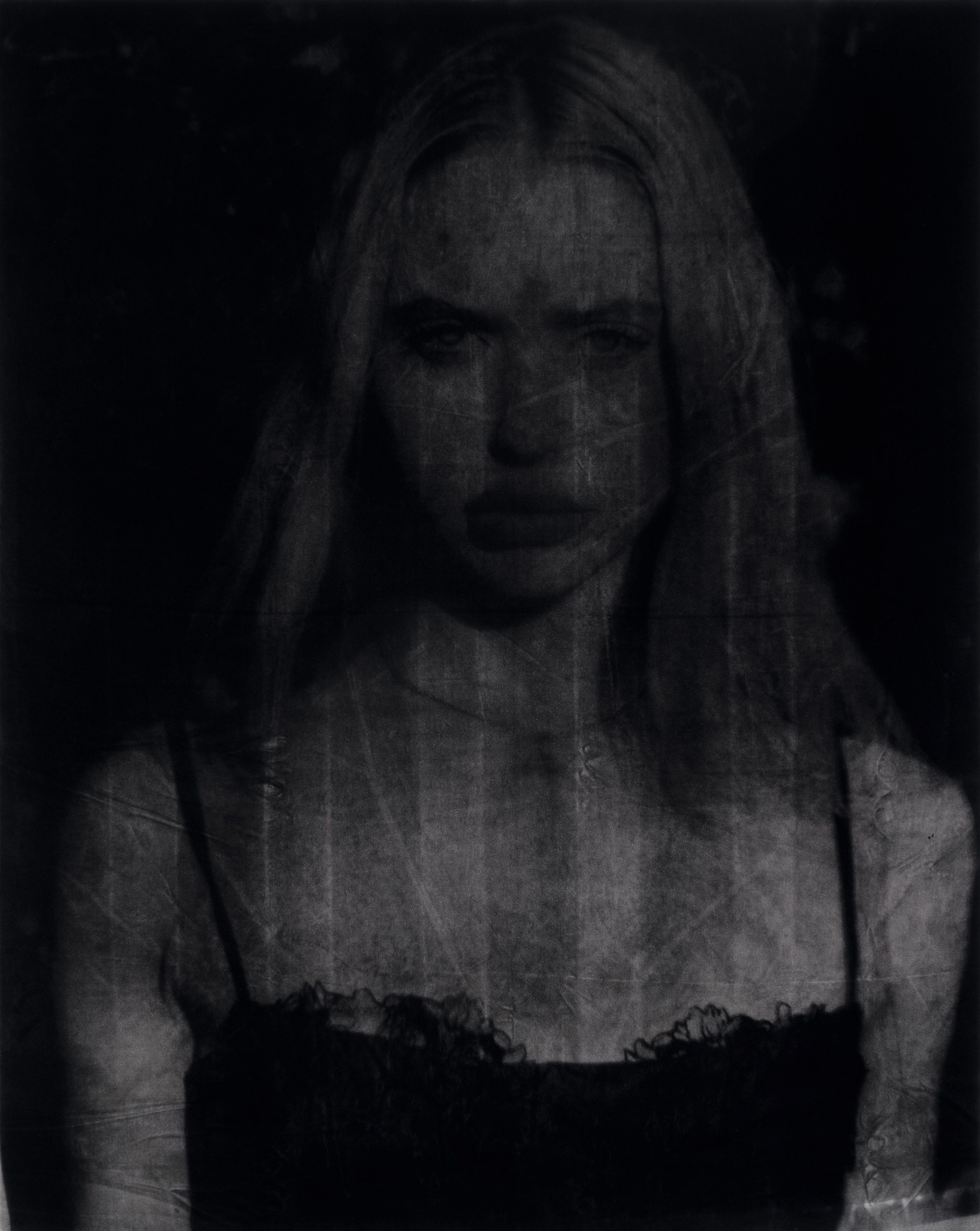
CLAIRE KORON ELAT: You seem to have a particular interest in celebrity culture. There is Chloe Cherry in your recent show but you also had a duo exhibition at Heidi together with Christophe de Rohan Chabot that similarly referenced celebrities—visually and thematically—including Mark Zuckerberg, Jeff Koons, and Elon Musk. Why are these people of interest?
BENJAMIN LALLIER: I actually don’t really care about who Chloe Cherry was before Euphoria. I hadn’t known her, but her aura struck me when she appeared in the TV show. So, I did extensive research on her—watched her porn, read her interviews, spoke with people who knew more about her. My friend Jordan Richman did an interview with her for Buffalo Zine during the pandemic, and he mentioned how crazy his friend’s ten-year-old daughters were when they heard he had interviewed her. They are obsessed with her, even though they are pre-teens. They asked for her phone number and told Jordan that they want her lips. They didn’t care about her past as a sex worker. That confirmed my first impression of her. I’m not particularly interested in celebrities per se, but more in why people become obsessed with certain figures to the point where they call them by their first names, despite not knowing them personally, and want to look like them.
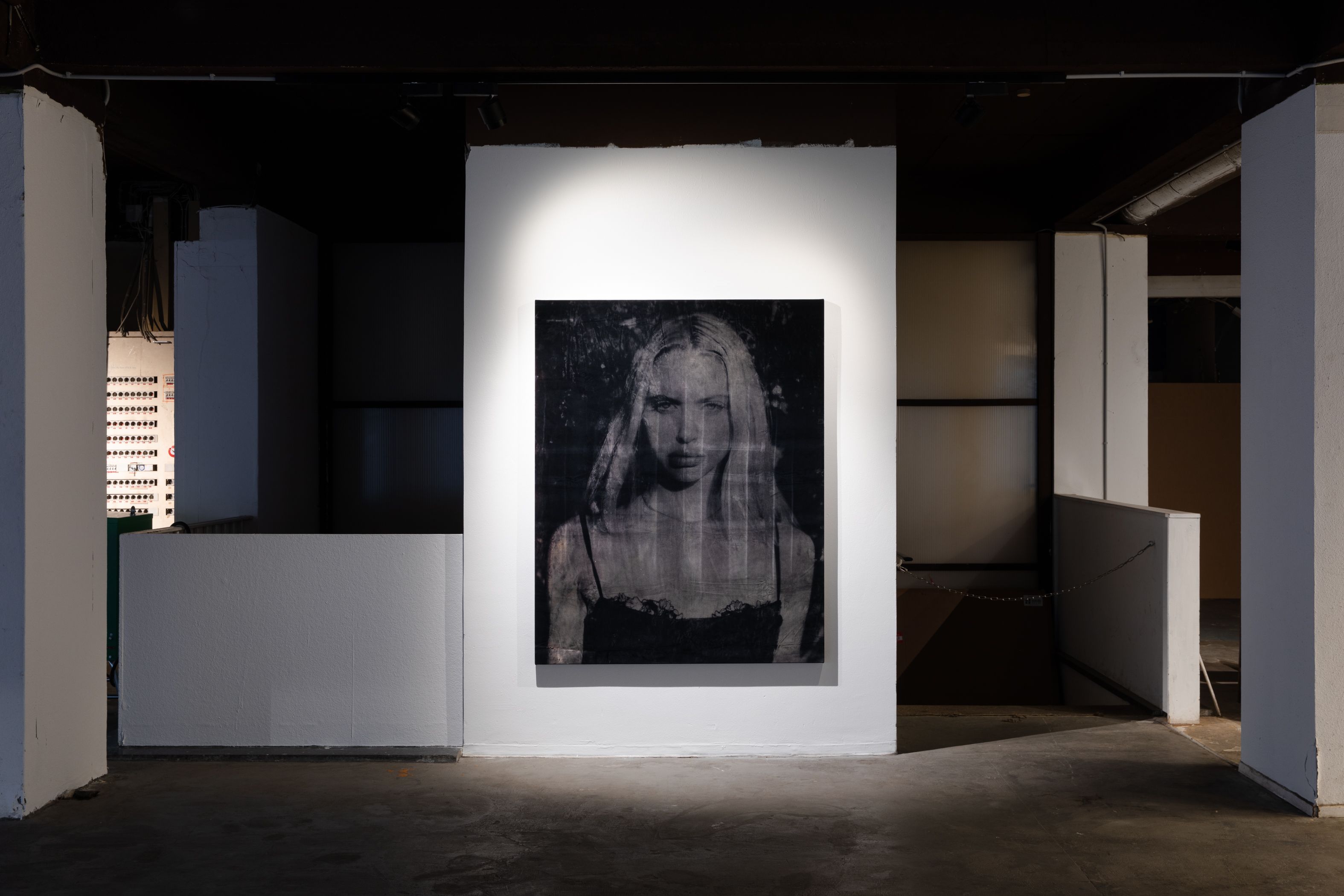
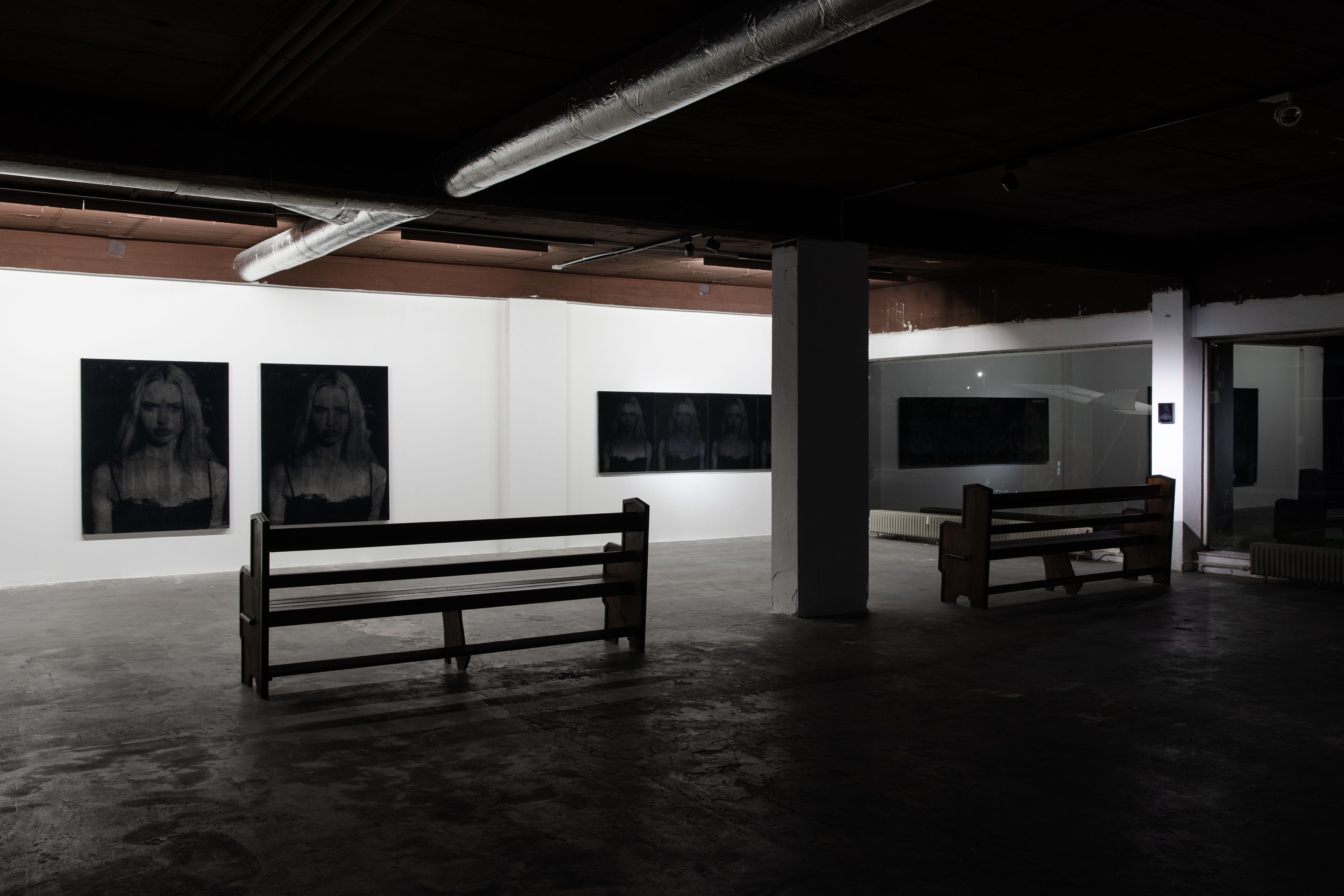
CKE: Andy Warhol’s practice comes to mind when thinking about your work. His probably most famous celebrity portrait is of Marilyn Monroe, which he created in the same month as her death. It’s highly idealized, glorifying, and sexualizes her. It strikes me as a form of a perverse or perverted version of a Madonna.
BL: Marilyn was obviously in my mind when it came to making those pieces. So was Duchamp and specifically his painting Nude Descending a Staircase, No. 2 (1912). What bothered people at the time is that a nude was not supposed to move and walk down the stairs.
Alienation is probably what interests me the most. It is clear to me that Duchamp was speaking about alienation at large. How a system controls and models you, and how people are happy to put you in your place. Chloe Cherry has the aura of a popular icon. And she, like all of us, lives in a very complex system.
CKE: Maybe Chloe Cherry represents a distorted and perverted version of the American dream. Do you think she is a Madonna?
BL: I don’t think the American Dream still exists—or ever has. Regarding Marylin, her life seemed glamorous and fabulous from the outside, but the reality was that she had an abusive childhood. Growing up, she made her way to the top but was abused even more. The USA in the 1950s—when the concept of the American Dream became popular, especially because of Hollywood—meant that you had to have a solid smile on your face when you said hi to the neighbors. But when they closed the door of their houses, they were alcoholics and violent towards their wife and children.
It was a time when women were supposed to stay home and open their legs. The American Dream is twisted and perverted. But I don’t think that Chloe Cherry has something to do with this perversion. She’s part of a system that doesn’t allow anyone to be happy. It bothers people that she gained the freedom to be whoever she wants to be. What’s beautiful to me though is that it doesn’t bother Gen Z.
When I selected a photo of her for my paintings, I wanted to have one in which she seemed at peace and in control—not overly sexualized in any form. All of the pieces are titled Madonna (No child), referencing the traditional way of depicting the Virgin Mary in the Catholic and Orthodox religions—while also subverting that reference. I made them in three different sizes: a large one to increase the respect for the figure, a medium one that sort of places the viewer in front of a mirror, thereby increasing empathy towards the character, and a small one that resembles traditional religious icons. In the show, church benches were placed in front of the larger paintings to enable the viewer to spend time with them.
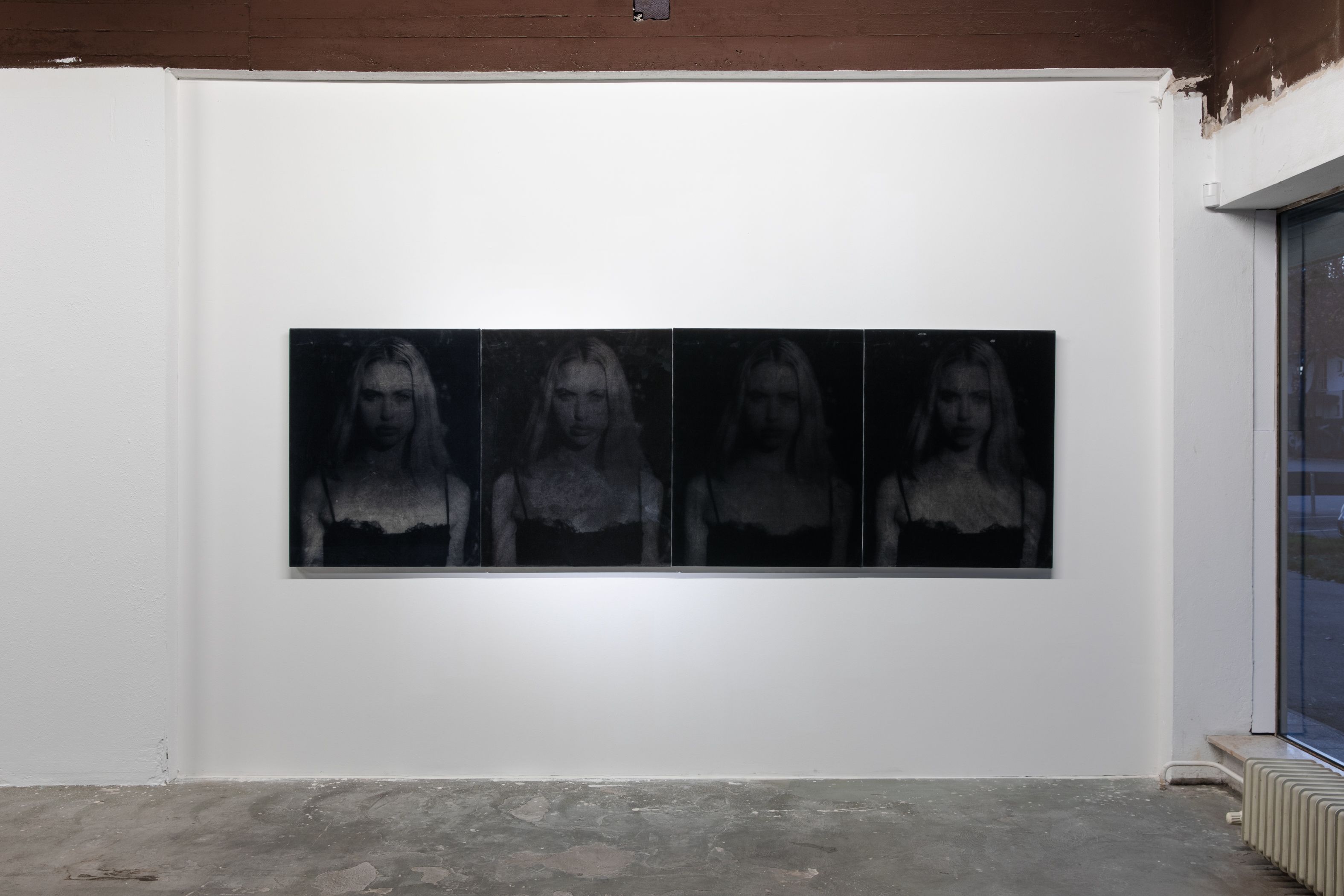
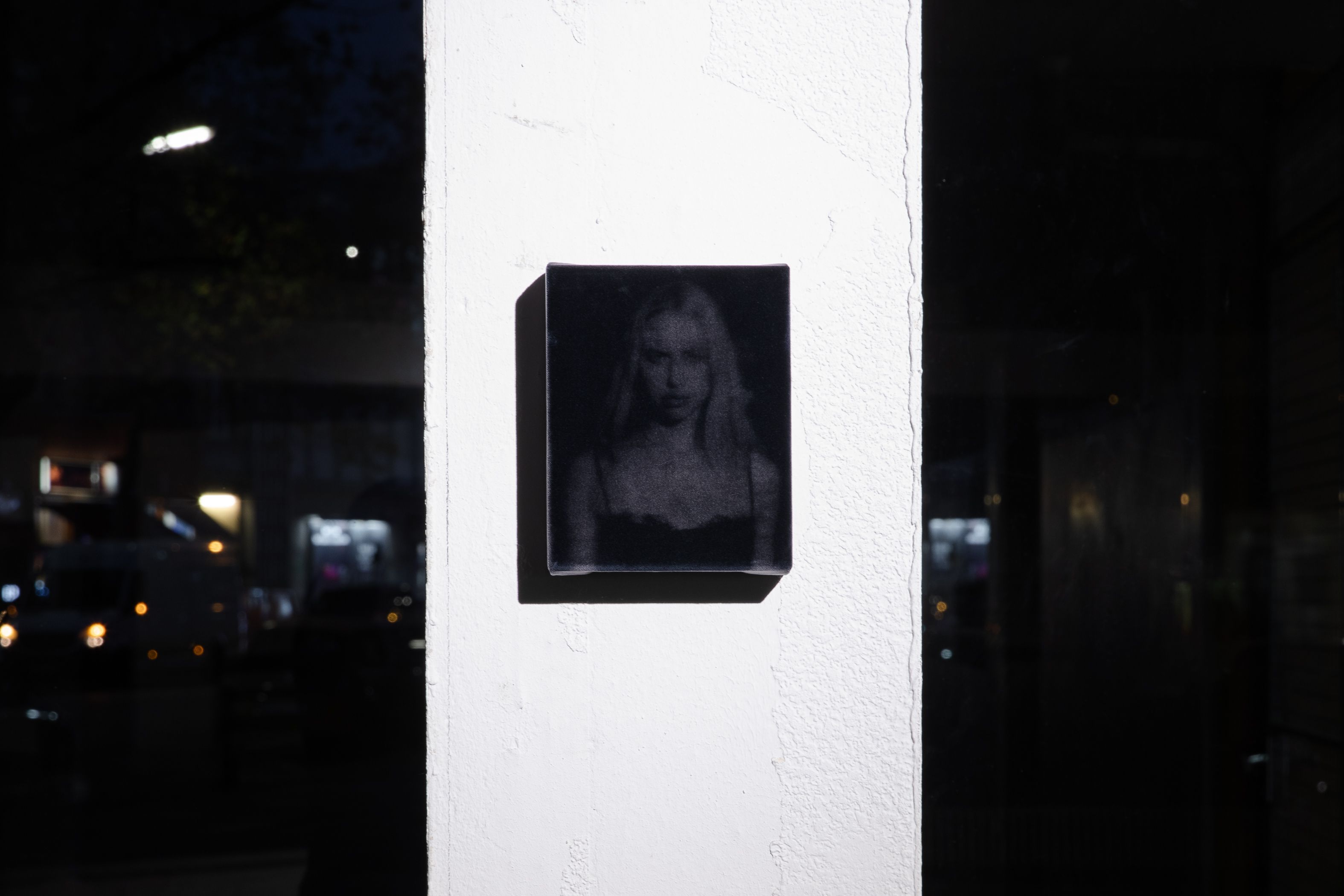
CKE: The work is made of sun-bleached velvet. It’s a material that you historically associate with wealth and indulgence. What role does the fabric play in the show?
BL: I used velvet because I love the way light reflects on it. When you move around the paintings, you can feel them. You see them changing from dark blue to a pale shiny silver. The spectrum is endless.
I play with the history and hidden meanings of velvet; and the sensuality of the material is very present as well. It is so beautiful but at the same time also extremely inaccessible. The first intention of people is to touch it and try to possess it. Extremely ironic.
The shiny and deep contrasts of the paintings are also important for me. Black didn’t work well, for example. Deep blue is way more striking when it’s sun-bleached. The process is long and slow but eventually you reach that magical silver image.
CKE: The press release quotes Jean Baudrillard’s Seduction, in which he states that seduction originates entirely with the girl. In a recent interview, Chloe Cherry said, “It seems like people hate women.” So, the notion of seduction, at least in patriarchy, seems to be inextricably bound to the sexualization and inferiorization of women. Do you imagine alternative notions of seduction or are the works rather a sober reflection of the status of our world?
BL: As mentioned earlier, I picked her for what she represents, especially for younger generations. That already says a lot. When I picked the image, I had Baudrillard’s concept in mind. It was clear to me that if I decide to use her image, I have to “un-sexualize” her, but without removing her power of seduction. It’s a thin line. The first thing people mention is her past as a porn actress. It seems exciting for them. It is not for me. I respect the hustle, but the new status of pop icon she acquired in such a short period of time is what counts for me.
Credits
- Text: Claire Koron Elat
- Photography: Diana Pfammatter
Related Content
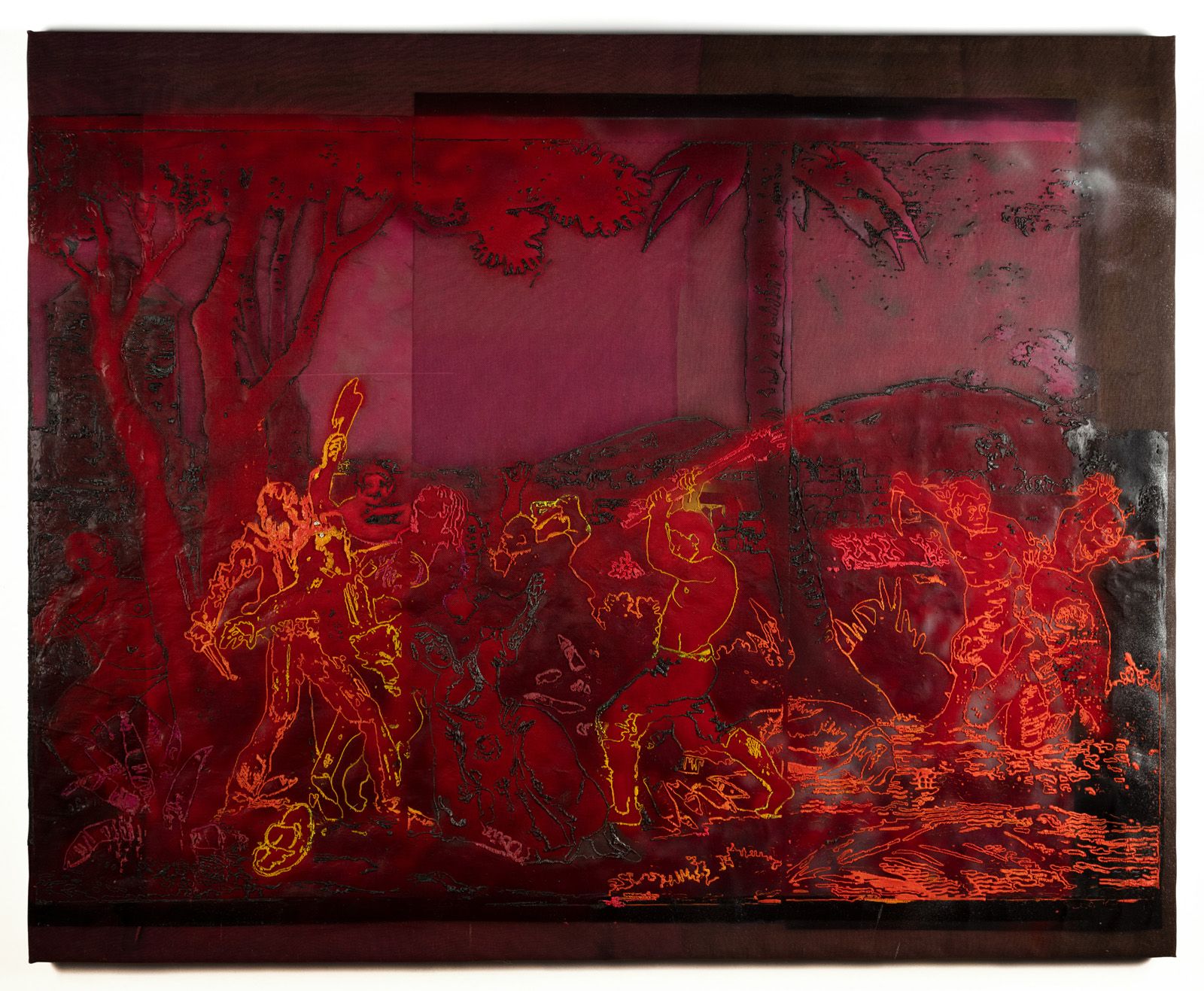
SMASHED COLLARBONES: Berlin Art Week 2022

Origin of the Gothic and Sublime: Becoming RICCARDO TISCI
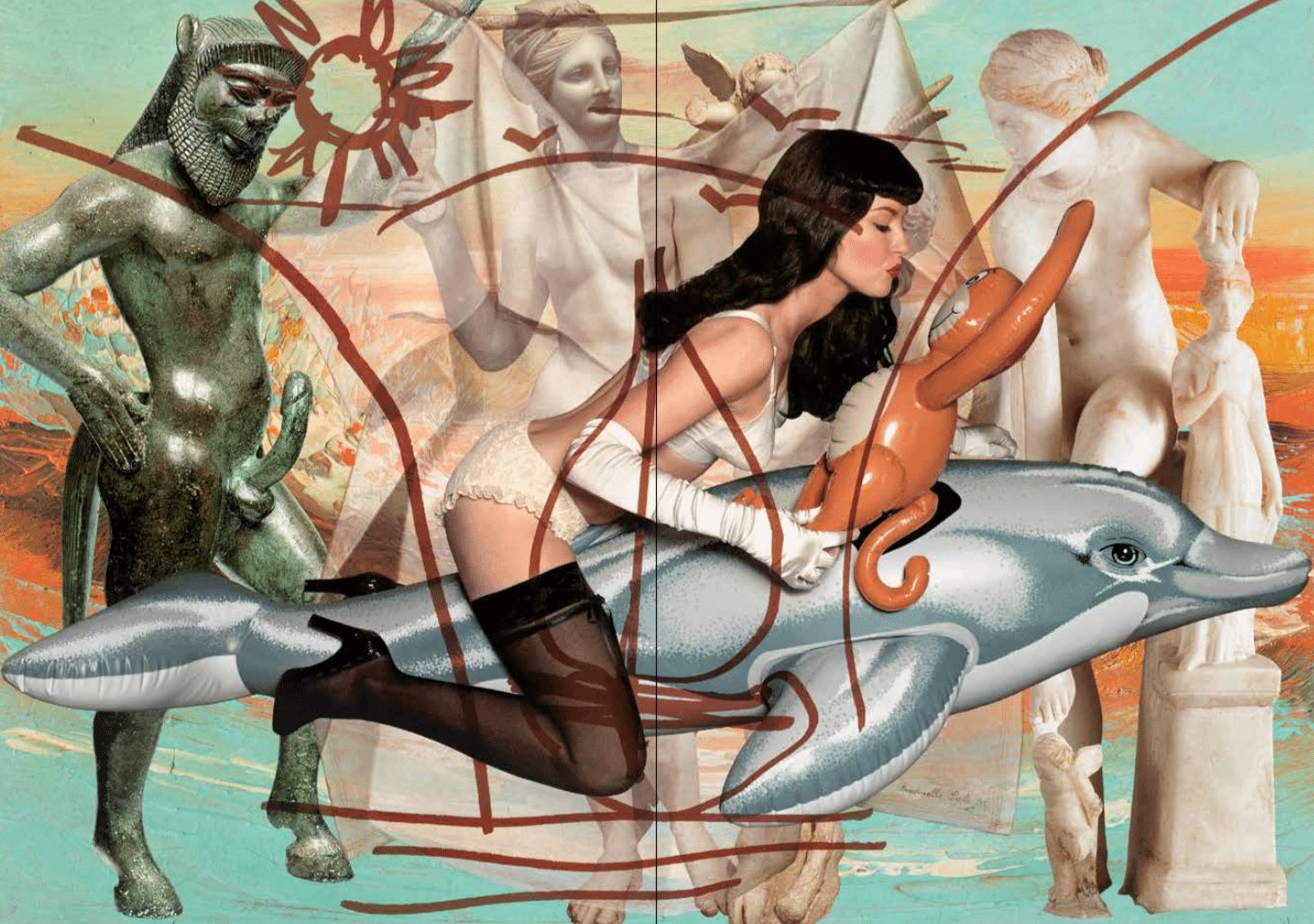
Keeping it Platonic: A Conversation with JEFF KOONS
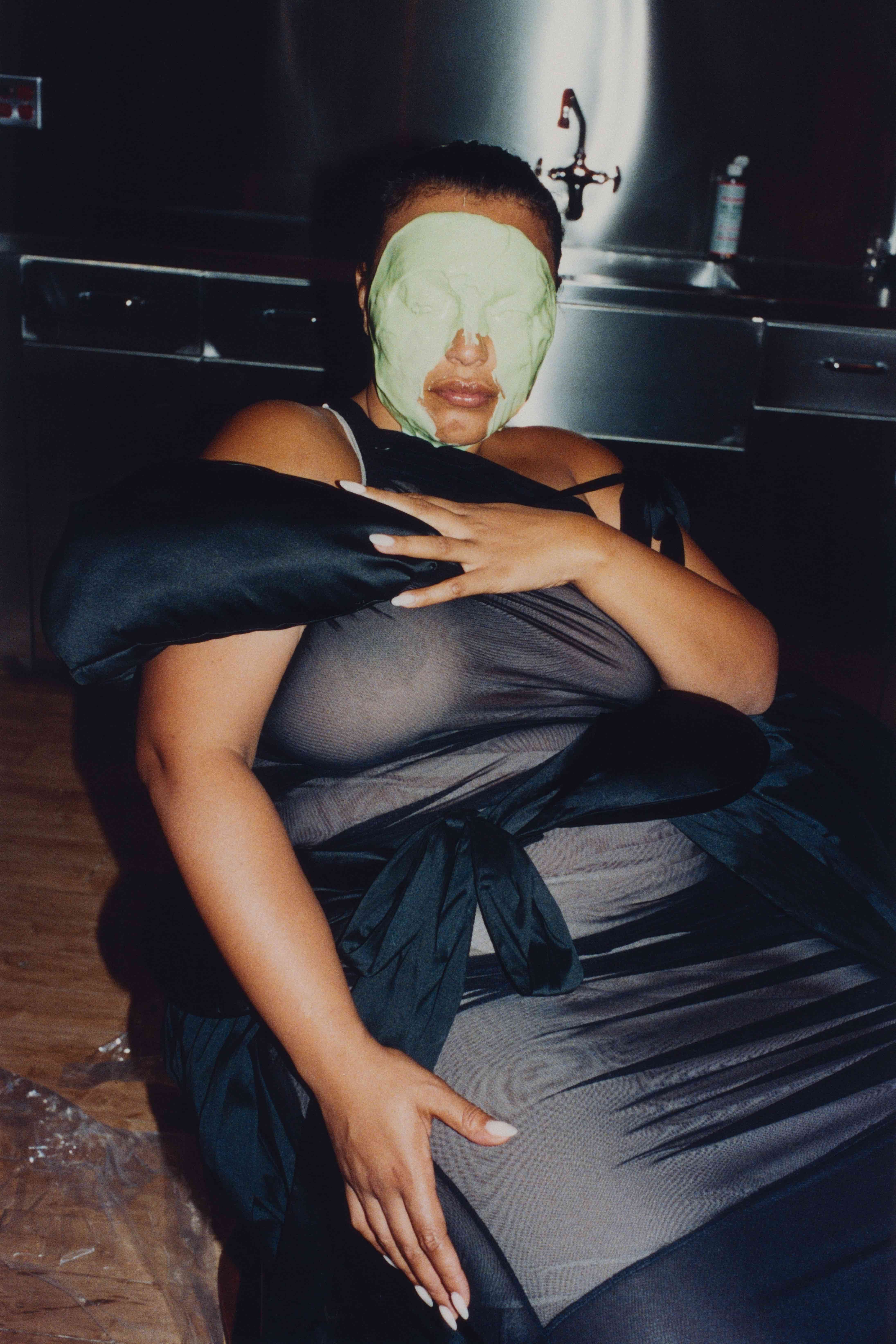
What Future Do We Crave?: KATHARINA KORBJUHN’s Paradigm Trilogy

From Sex-Tech to Global Warming: The Chronicle of 17 Artists Who Created BMW’s Acceleration Aesthetics

AMERICA
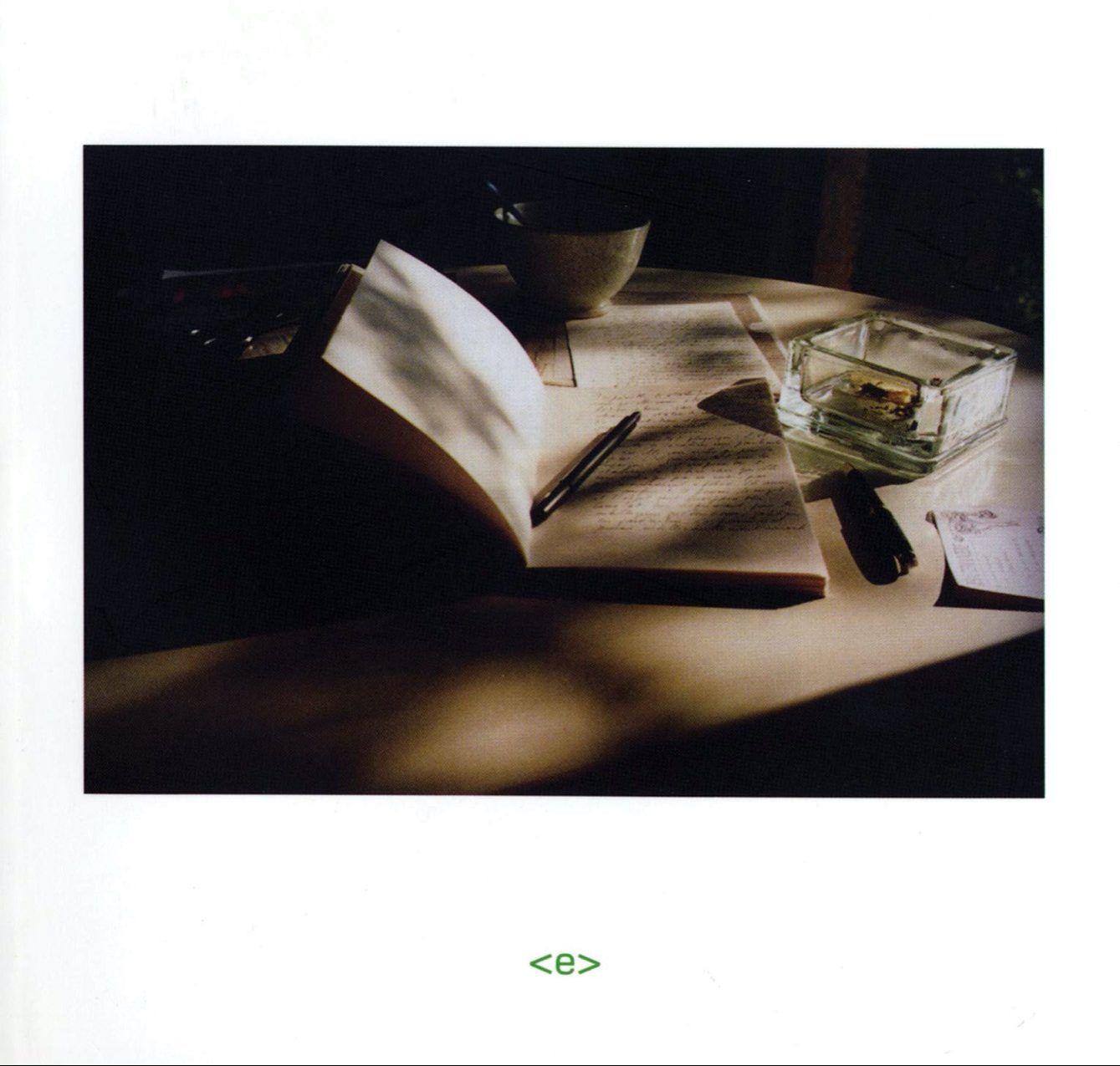
IYKYK: An Interview with Chris Kraus and Hedi El Kholti, Editors of SEMIOTEXT(E)
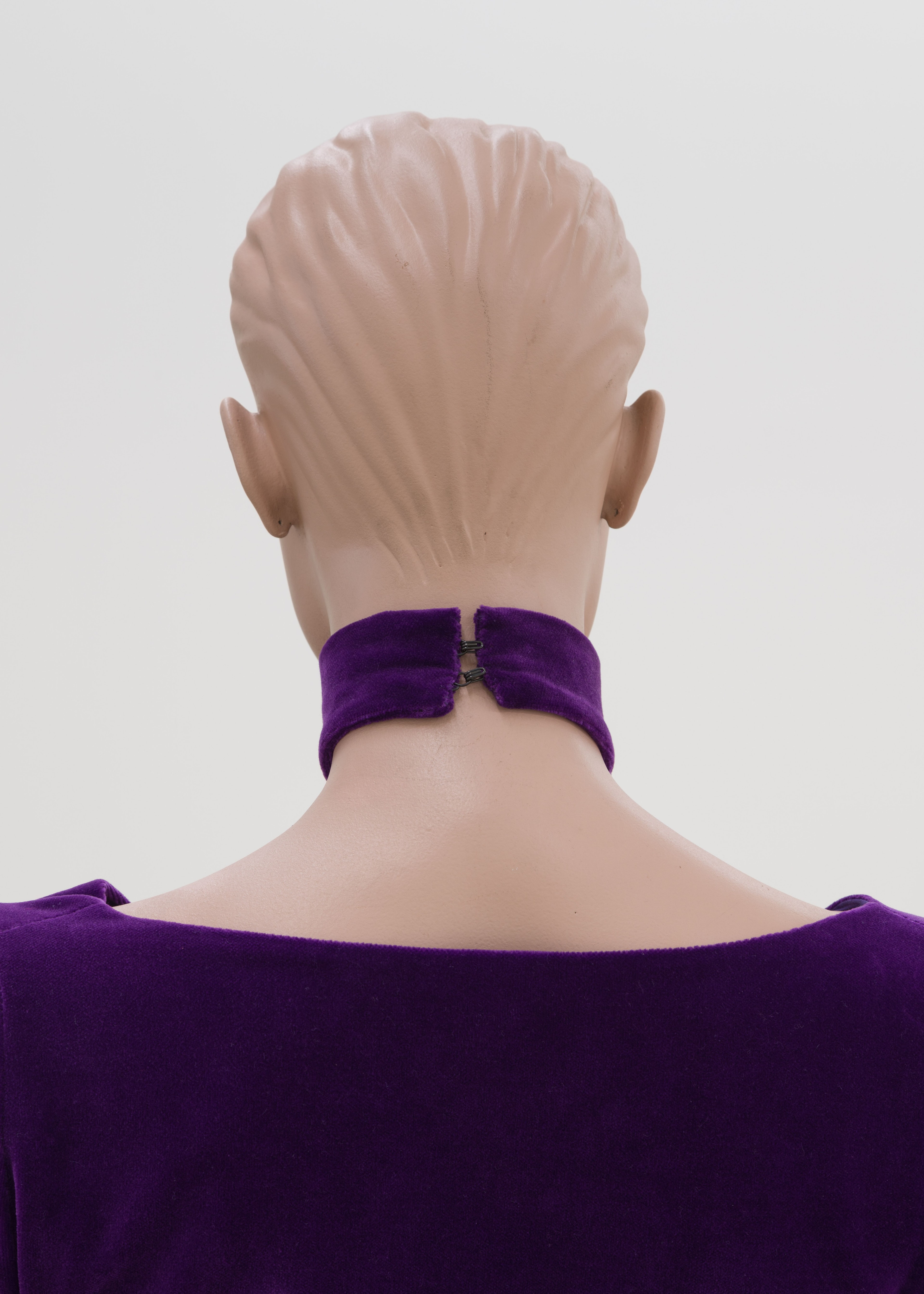
The Failed Desires Index: Tiny Skirts and Bigger Belts